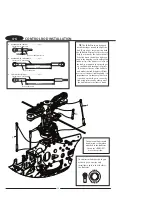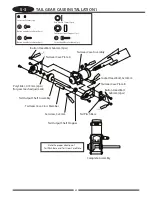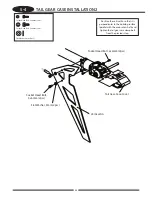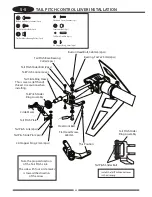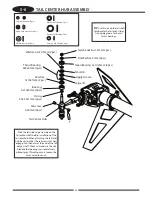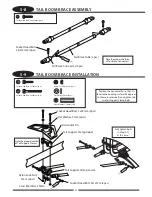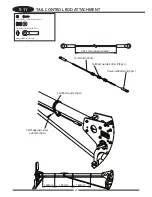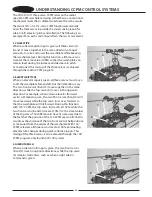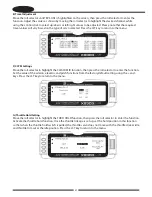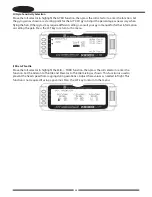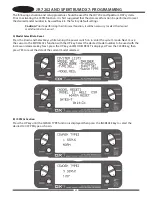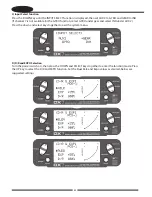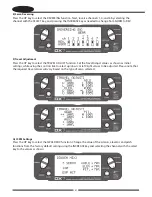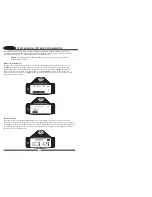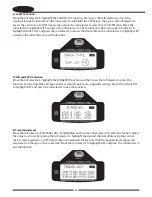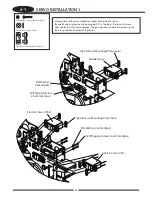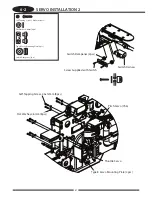
The JR 120°/140° three servo CCPM relies on the radio’s
special CCPM swashplate mixing, rather than a conventional
mechanical mixer that is utilized to achieve the same results.
The radio’s 120° or 140° 3-servo CCPM function automatically
mixes the three servos to provide the correct mixing inputs for
aileron (roll), elevator (pitch), and collective. The following is an
example of how each control input affects the servo’s movement.
1. COLLECTIVE
When a collective pitch input is given, all three servos (A,
B, and C) move together in the same direction, at equal
amounts, to raise and lower the swashplate while keeping
the swashplate level. During this function, all three servos
travel at the same value (100%) so that the swashplate can
remain level during the increase and decrease in pitch.
As mentioned, this mixing of the three servos is achieved
through the radio’s CCPM program.
2. ELEVATOR (PITCH)
When an elevator input is given, all three servos must move
to tilt the swashplate fore and aft, but their directions vary.
The two front servos (B and C) move together in the same
direction, while the top servo (A) moves in the opposite
direction. For example, when a down elevator (forward
cyclic) command is given, the two front servos (B and C) will
move rearward, while the top servo (A) moves forward so
that the swashplate will tilt forward. During this function
with 120° CCPM, the top servo (A) travels at 100%, while the
two front servos (B and C) travel at 50% (1/2 the travel value)
of the top servo. This difference in travel is necessary due to
the fact that the position of the 120 CCPM rear control ball is
two times the distance of the two front control ball positions
as measured from the center of the swashplate. With 140°
CCPM selected, all three servos travel at 100%, eliminating
elevator trim changes during quick collective inputs. This
mixing of the three servos is also achieved through the 140°
CCPM program only found in JR 10X systems.
3. AILERON (ROLL)
When an aileron (roll) input is given, the two front servos
(B and C) travel in opposite directions, while the top servo
(A) remains motionless, such as, when a right aileron
command is given.
understAndIng ccPm control systems
A
A
A
C
C
C
B
B
B
42



